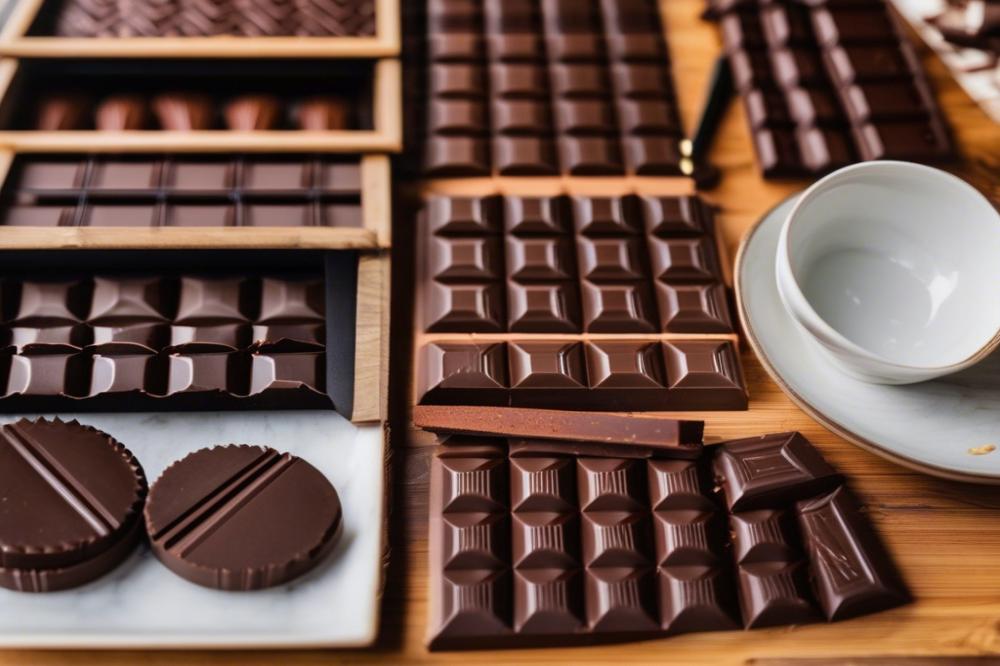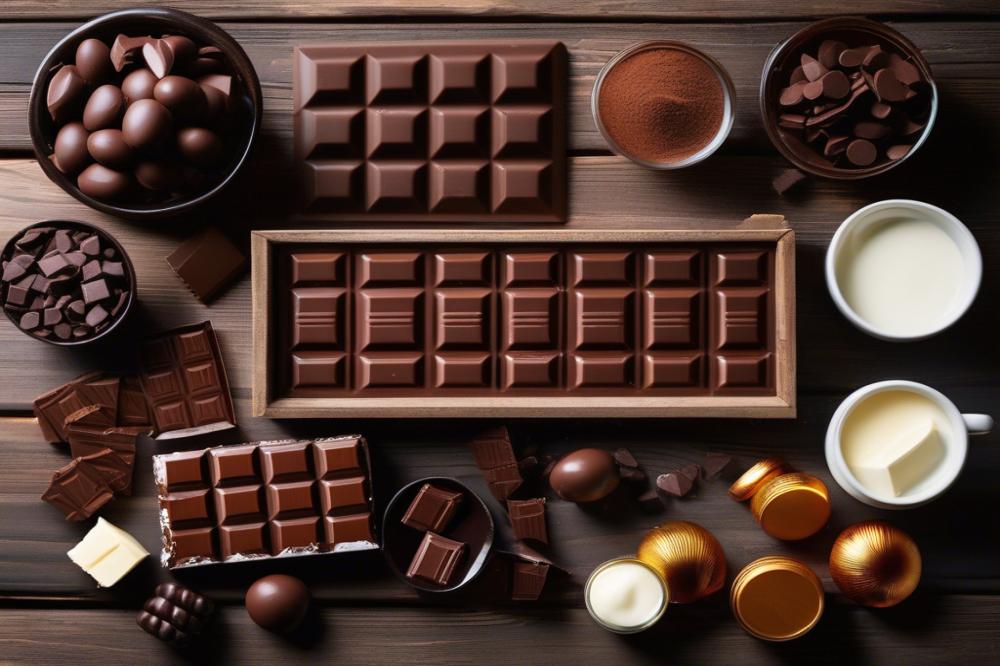The Growth of Craft Chocolate: A Closer Look
Over the past few years, a significant shift has occurred in the chocolate industry. Consumers are no longer satisfied with mass-produced confections. They are seeking something more, something special. Enter Craft Chocolate—a movement focused on quality, ethics, and unique flavor experiences. Small batch production methods have given rise to artistic chocolate makers who prioritize bean-to-bar practices.
Importance lies in sustainable sourcing. Many chocolate makers have turned their attention to cocoa farming practices that protect the environment and empower local producers. This trend shows a growing awareness of the impact that chocolate production has on communities and ecosystems. As consumers grow increasingly concerned about these issues, the desire for ethical chocolate continues to rise.
Flavor profiles play a crucial role in this emerging landscape. Artisanal Chocolate makers experiment with different ingredients and techniques to create distinctive offerings. These chocolate artisans emphasize the nuances of taste, going beyond simple sweetness. The focus is now on how the origin of cocoa beans influences the overall experience. Each bar tells a story, connecting eaters to the land and the people who grew the beans.
In tandem with these changes, a new generation of chocolate trends has begun to take shape. From innovative flavors to bold packaging, the landscape is rich with creativity. Consumers relish the opportunity to explore gourmet chocolate options. They appreciate quality over quantity, shifting their preferences toward products that provide an experience rather than just a snack.
A closer look at these developments reveals the importance of understanding how craft chocolate is reshaping the industry. As more people become aware of sustainable practices and the art behind each chocolate bar, it is clear that this movement is not just a passing trend. The growth of this sector reflects a desire for connection, quality, and a brighter future for chocolate lovers and producers alike.
The Definition and Characteristics of Craft Chocolate

Craft chocolate is more than just a treat; it symbolizes a commitment to quality and ethical production. Many people define it as chocolate made from bean to bar. This process emphasizes involvement at every step, from sourcing the cacao beans to the final product. Unlike mass-produced chocolate, which relies heavily on industrial methods, craft chocolate makers focus on small batch production. This approach allows for greater control over flavor and quality.
Understanding the bean-to-bar process is key to appreciating this type of chocolate. Chocolate makers take extra care in selecting high-quality beans. They often work directly with cacao farmers, promoting sustainable sourcing practices. Attention is paid to everything from fermentation to roasting and tempering. Each step can profoundly affect the final taste, resulting in rich, complex flavor profiles that differ dramatically from those found in mass-produced alternatives.
Local producers play a vital role in the craft chocolate scene. These small businesses often emphasize ethical chocolate production. They can experiment with different techniques and ingredients, leading to gourmet chocolate varieties. Collaborations with nearby farms can enhance flavor and freshness. By keeping production local, they also support the community and foster direct connections with consumers.
The rise of chocolate trends has put a spotlight on quality. Consumers are increasingly looking for products that tell a story, often preferring handmade chocolate crafted with passion. This shift reflects a broader preference for artisanal foods. Such trends drive interest in high-quality ingredients and unique flavor combinations, which smaller chocolate makers can offer more readily than larger companies.
Sustainable Sourcing and Ethical Chocolate Practices

The craft chocolate movement emphasizes sustainable sourcing. Many chocolate makers strive to obtain cocoa through methods that are considerate of both the environment and the workers. This aspect is crucial in reshaping how chocolate is produced. Sustainable practices often help combat deforestation and promote biodiversity. Local producers benefit when chocolate makers commit to ethical principles, creating a positive impact across the supply chain.
Ethical chocolate production significantly influences cocoa farming communities. Fair wages and improved working conditions are central to many small-batch producers’ operations. An increased focus on ethical practices leads to better living standards for farmers. When farmers receive fair compensation, they can invest in their families and communities. This shift not only uplifts individual lives but supports regional development as well.
Several brands are making waves by prioritizing sustainability and ethics. Companies like Dandelion Chocolate and Taza Chocolate source beans directly from growers. Their bean-to-bar process highlights the connection between cacao farmers and chocolate makers. They often share flavor profiles that reflect the unique characteristics of different cocoa beans. These brands demonstrate that a commitment to ethical chocolate can also elevate gourmet chocolate experiences.
Other notable examples include Askinosie Chocolate, famous for its direct trade model. By collaborating with farmers, they ensure transparency throughout the supply chain. Their approach fosters strong relationships and mutual respect, benefiting both parties. Craft chocolate makers are leading a trend that values quality over quantity. This methodology draws attention to the importance of knowing where chocolate comes from and how it is made.
Innovative Flavor Profiles in Craft Chocolate

Chocolate makers have transformed the way we think about chocolate. Their passion for bean-to-bar methods has opened doors to unexpected flavors. Today, many brands focus on sustainable sourcing, working closely with local producers. This commitment provides a fresh perspective on how chocolate is created.
Many craft chocolate artisans experiment with non-traditional ingredients. Some incorporate spices like chili or cinnamon, giving a spicy twist to the classic sweet. Others have chosen to blend in fruits, such as raspberry and passion fruit, which add a refreshing touch. The goal is to elevate the tasting experience, leading to various flavor profiles that surprise the palate.
Techniques used in these small batch creations also make a difference. Chocolate makers often roast cocoa beans at different temperatures to bring out distinct flavors. Each batch can taste remarkably different depending on the approach taken. This method highlights the rich diversity found in cocoa farming.
A stark contrast exists between these gourmet chocolate offerings and traditional products. While mainstream chocolate typically relies on mass production, craft chocolate prioritizes individuality and quality. The flavor depth in specialty chocolates outshines the often bland profiles found in mass-produced varieties.
Consider how chocolate trends are shifting. Consumers now seek ethical chocolate options, looking for quality over quantity. They are more aware of how cocoa is harvested and the impact it has on communities. In doing so, buyers support companies that advocate for fair practices and sustainability.
Even packaging reflects this growing movement. Many craft brands take care to use eco-friendly materials. This resonates with customers who want to make conscious choices in their snacking habits. Tasting chocolate is no longer just about sweetness; it’s a journey through flavor and responsibility.
The Role of Chocolate Makers in the Craft Chocolate Industry
Chocolate makers play a vital role in the growth of artisan chocolate. These professionals transform raw cocoa beans into gourmet chocolate treats. They are the backbone of a movement focused on quality over mass production. As more people appreciate the rich flavors and stories behind each bar, the importance of skilled chocolatiers has become clearer.
To craft high-quality chocolate, makers need a diverse set of skills. Knowledge of cocoa farming is essential. Understanding different flavor profiles allows them to create products that resonate with consumers. Mastery over the bean-to-bar process is critical. This journey involves roasting, grinding, and refining the cocoa. Each step requires attention to detail and an ability to adapt. Small batch production enables chocolatiers to focus on quality. They often source ingredients from local producers, which adds to the chocolate’s unique character.
Notable Chocolate Makers Leading the Movement
Several chocolate makers have become prominent figures in the ethical chocolate industry. They emphasize sustainable sourcing and support for farmers. One such leader is Dandelion Chocolate from San Francisco. They are known for their transparent process and emphasis on direct trade with cocoa farmers. Another example is Askinosie Chocolate, which highlights their commitment to community and sustainability. Their mission goes beyond just making chocolate; it involves improving the lives of farmers, too.
Innovative chocolate trends are emerging as well. New flavor combinations and techniques keep offerings fresh and exciting. Makers continually experiment with ingredients, incorporating spices, fruits, and even herbs. This creativity has led to a wider appreciation for craftsmanship. Consumers are asking questions about where their chocolate comes from, pushing makers to be more transparent.
In conclusion, chocolate makers are not just creators; they are educators and innovators. They lead by example, demonstrating how small, dedicated businesses can make a significant impact. As the craft chocolate industry continues to evolve, their influence will be critical in shaping its future.
Chocolate Trends Shaping the Future of Craft Chocolate
The chocolate industry is experiencing exciting changes. Gourmet chocolate has become a favorite among many consumers. With that rise, health-oriented options are also gaining traction. More people now seek out snacks that satisfy both their cravings and dietary needs.
An increasing number of chocolate makers are focusing on sustainable sourcing. This practice enhances their appeal, as it attracts environmentally conscious buyers. Small batch production allows these artisans to create flavors that stand out. Unique flavor profiles are becoming a hallmark of quality chocolate. Chefs and chocolatiers push the boundaries of taste, exploring spices, fruits, and even herbs.
Many local producers are embracing the bean-to-bar method. This means they manage the entire process, from sourcing beans to crafting the chocolate. Transparency in cocoa farming fosters trust with consumers. They appreciate knowing where their food comes from and how it was made. Ethical chocolate is increasingly valued, with buyers wanting to support fair wages for farmers.
As consumers dive deeper into chocolate trends, they often seek more than just flavor. Craft chocolate is tied to stories of the makers and their values. Many customers are driven by a desire to indulge in more meaningful experiences. Experiences that connect them not only to ingredients but also to the communities that produce them.
The future outlook for this market appears promising. Innovations in flavors will likely continue, as chocolate makers experiment and evolve. New techniques in production could also emerge. Technologies that enhance sustainability in sourcing and processing cocoa are on the horizon. As awareness spreads about the importance of fair trade practices, even more consumers will align with these values.
Consumers are not only changing their preferences but also how they engage with the chocolate world. Events celebrating chocolate tasting, workshops on making candy, and educational seminars are becoming popular. Increased interest in artisan products hints at a significant shift in snack choices. Chocolate is no longer viewed merely as a treat; it has become a cultural symbol.
Final Insights on the Craft Chocolate Boom
The growth of Artisanal Chocolate has transformed the industry in recent years. Small producers focus on quality and flavor, carving out a niche in a market once dominated by big brands. As consumers become more educated, their demand for premium products rises. This shift has encouraged chocolate makers to embrace sustainable sourcing and ethical practices.
Bean-to-bar production has become a hallmark of this movement. Through this process, makers oversee every stage, from selecting beans to packaging the final product. This allows them to highlight the origin and flavor profiles of their chocolates. Unique combinations and innovative flavors capture the interest of adventurous palettes.
In addition to delicious treats, ethical considerations are becoming a significant focus in this sector. Transparency in sourcing helps build trust with customers. Many chocolate makers work directly with farmers, ensuring fair prices and better living conditions. This partnership supports communities and fosters a positive impact on local economies.
Looking ahead, the future of artisanal chocolate appears bright. The trend is expected to continue, with growing interest from new consumers. As awareness of sustainability expands, more people seek out products that align with their values. The creativity in this sector is limitless, and it encourages ongoing exploration.
The rise of craft chocolate is not just a fad; it’s a meaningful change that redefines our chocolate experience. Engaging with these brands allows consumers to make choices that benefit both their taste buds and the planet. The journey is just beginning, and it promises exciting discoveries along the way.



